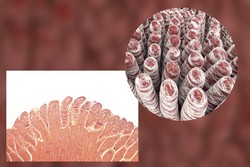Improved images from light sheet technology
Illuminating samples with a thin sheet of light allows the high contrast imaging of life specimens with minimal sample exposure, photo-bleaching or damage. Rapid three-dimensional imaging can be achieved using wide-field detection with a second objective at right angles to the light sheet. These characteristics make this form of microscopy ideally suited to studying the development of biological specimens and the evolution of neurodegenerative diseases. However, resolution and contrast are still limited when looking beyond the outer layers of brain tissue as unwanted light and scattering cause a hazy background that overwhelms the image. At present, the highest resolution of light sheet microscopy can only be achieved using relatively transparent samples. The project SURE-ALISM (Super resolution adaptive light sheet microscopy for high resolution volumetric imaging in turbid specimen) therefore investigated the effect on image quality of the surrounding biological material to gain a deeper understanding of the technique and to discover new ways of overcoming its limitations. Researchers studied how the blur varies in three-dimensional space within a one cubic millimetre sample and developed algorithms for estimating the size of the blur. Although this resulted in an improvement in image quality it was limited to the part of the sample closest to the detection objective. Scientists then built a light sheet microscope with adaptive optics capabilities to correct sample-induced aberrations and achieve a sharper image. Adaptive optics were originally developed to overcome the atmospheric turbulence that hinders astronomical observations. Finally, a new contrast mechanism was found for light sheet microscopy that could clearly distinguish labelled structures from auto-fluorescent and laser scattering. When tested, this novel method showed a 400-fold contrast improvement, while further tests with cells and bacteria demonstrated biocompatibility. By extending the limits of current light sheet microscopy technology, SURE-ALISM will enable scientists to achieve a deeper understanding of biological processes and how they can malfunction.






